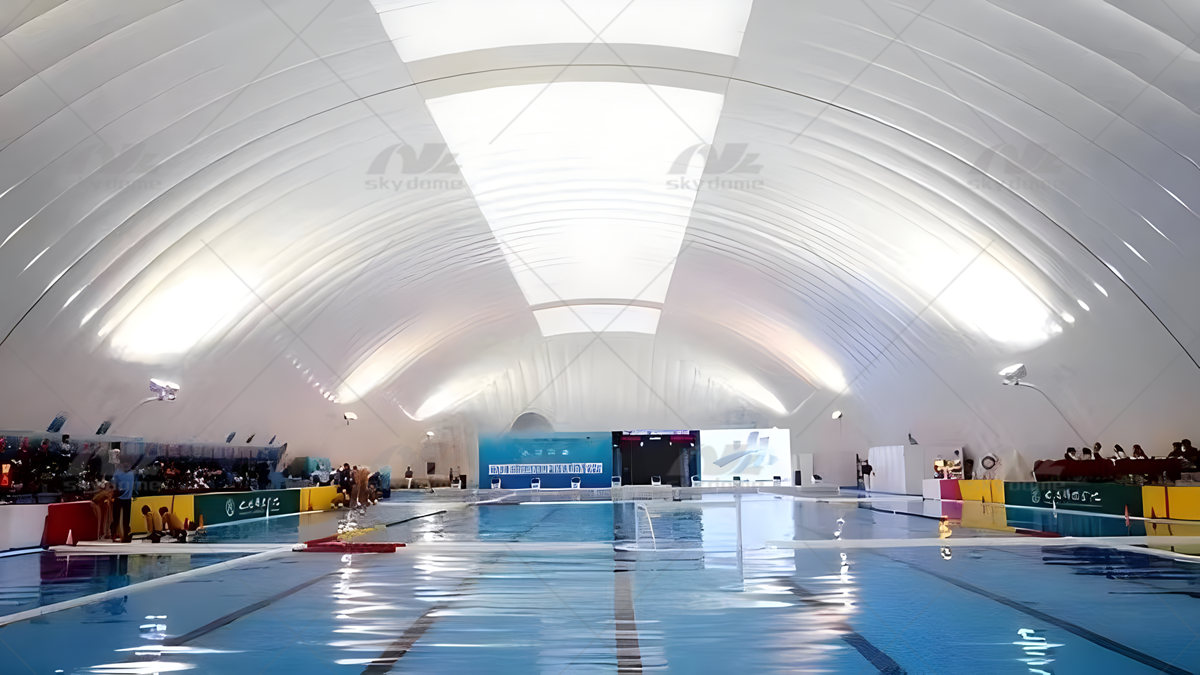
Air domes are a unique and fascinating structure that has gained popularity in recent years. These domes are used in various applications, from sports facilities to storage units, and are known for their ability to provide a controlled environment. However, monitoring and controlling the air dome can be challenging, especially in larger structures. This is where intelligent systems come in, providing advanced technology to improve air dome monitoring and control.
Overview of air domes and their components
An air dome is a structure that uses air pressure to maintain its shape and provide a controlled environment. These domes are typically made of a durable material, such as PVC or PE, and are inflated using a fan or blower. The air pressure inside the dome creates a stable structure that can withstand various weather conditions, making it an ideal choice for sports facilities, storage units, and other applications.
The components of an air dome are relatively simple, consisting of the dome itself, the inflation system, and the control system. The inflation system is responsible for maintaining the air pressure inside the dome, while the control system monitors and adjusts the temperature, humidity, and other environmental factors. These components work together to provide a controlled environment, ensuring that the air dome meets the specific needs of the application.
Understanding the challenges of air dome monitoring and control
While air domes offer many benefits, monitoring and controlling the environment inside the dome can be challenging. One of the biggest challenges is maintaining the proper air pressure. If the pressure is too low, the dome may collapse, while too high pressure can cause damage to the structure. Maintaining the correct pressure requires constant monitoring and adjustment, which can be time-consuming and labor-intensive.
Another challenge is controlling the temperature and humidity inside the dome. These factors can vary significantly depending on the weather conditions outside, making it difficult to maintain a consistent environment. Traditional monitoring and control systems often rely on manual adjustments, which can be inaccurate and inefficient.
Finally, monitoring and controlling the air dome can be challenging in larger structures. The size of the dome makes it difficult to monitor all areas, and traditional control systems may not be able to adjust the environment in real time. These challenges can lead to an inconsistent environment, which can impact the performance of the facility or the quality of the stored goods.
The role of intelligent systems in air dome monitoring and control
Intelligent systems are advanced technologies that use data and analytics to improve monitoring and control. In the case of air domes, intelligent systems can provide real-time monitoring and control, allowing for more accurate and efficient adjustments.
One of the key components of intelligent systems is sensors. These devices can be placed throughout the dome to monitor various environmental factors, such as temperature, humidity, and air pressure. The data collected by the sensors is then sent to a central control system, which can make real-time adjustments based on the information.
Another important aspect of intelligent systems is automation. Traditional monitoring and control systems often rely on manual adjustments, which can be time-consuming and inefficient. Intelligent systems, on the other hand, use automation to make real-time adjustments based on the data collected by the sensors. This allows for more accurate and efficient monitoring and control, reducing the need for manual intervention.
Intelligent systems can also provide predictive analytics, allowing for proactive monitoring and control. By analyzing historical data, these systems can predict potential issues and make adjustments before they occur. This can help to prevent costly downtime and ensure that the air dome is operating at peak performance.
Benefits of intelligent systems in air dome monitoring and control
The benefits of intelligent systems in air dome monitoring and control are numerous. One of the biggest advantages is improved accuracy and efficiency. Traditional monitoring and control systems often rely on manual adjustments, which can be inaccurate and inefficient. Intelligent systems, on the other hand, use real-time data and automation to make more accurate and efficient adjustments.
Another benefit is proactive monitoring and control. Intelligent systems can provide predictive analytics, allowing for proactive monitoring and control. This can help to prevent costly downtime and ensure that the air dome is operating at peak performance.
Intelligent systems can also provide remote monitoring and control. With the use of sensors and automation, it is possible to monitor and control the air dome from a remote location. This can be especially beneficial for larger structures, where it may be difficult to monitor all areas in person.
Finally, intelligent systems can provide cost savings. By reducing the need for manual intervention and providing proactive monitoring and control, these systems can help to reduce operating costs and improve the overall efficiency of the air dome.
Conclusion
In conclusion, intelligent systems are improving air dome monitoring and control by providing advanced technology to address the challenges of traditional systems. With the use of sensors, automation, and predictive analytics, these systems can provide real-time monitoring and control, improved accuracy and efficiency, proactive monitoring and control, remote monitoring and control, and cost savings. As air domes continue to gain popularity in various applications, intelligent systems will play a crucial role in ensuring that these structures operate at peak performance.
















